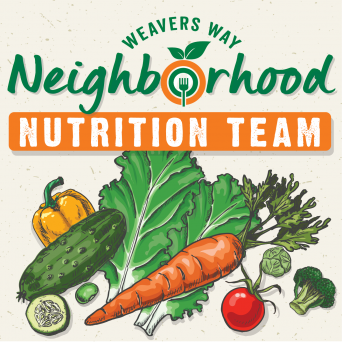
Gluten and Grains: The Whole Story

RECIPE
Marinated Chickpeas with Quinoa & Greens (VEGAN & GLUTEN-FREE)
(Serves 4 )
- 15 oz. cooked chickpeas
- (one can), drained and rinsed
- 1/2 cup almonds, chopped
- 1 cup cooked quinoa, cooled
- 1/4 cup scallions, trimmed and thinly sliced
- 1 cup cherry tomatoes, halved or quartered
- 4 cups (about 1/2 bunch) dandelion greens, leaves and stalks (or use whatever greens you have — I have used a mix of baby spinach, baby kale and collards)
- For the marinade:
- Grated zest of 1 lemon + 2 tbls. juice
- 3 tbls. extra-virgin olive oil
- 2 tbls. fresh flat leaf parsley leaves
- 1/4 tsp. salt
- 1/4 tsp. red pepper flakes
Whisk together lemon zest and juice, oil and parsley in a bowl. Add chickpeas and season with salt and pepper flakes. Let stand 30 minutes.
Combine salad ingredients in a large bowl. Add marinated chickpeas; toss to combine. Season with salt and serve.
Make-ahead tip: Marinate chickpeas and combine salad ingredients the night before serving. Store separately in refrigerator, then combine right before serving.
It’s very common these days to hear someone say they’re staying away from gluten in their diet. But what IS gluten? Is it actually bad for you? Which grains contain gluten and which don’t? So many questions! Luckily, the Weavers Way Neighborhood Nutrition Team is here to help. In the month of May, the Team is focusing on nutrition education programming all about gluten and grains.
Gluten is a protein found in wheat, barley, rye, bulgur, couscous, malt and triticale. Other grains, such as amaranth, buckwheat, rice, millet, quinoa, sorghum and teff, don’t contain the gluten protein.
Gluten is valuable in cooking because it helps texture and shape foods by creating elasticity, and many gluten-containing grains have been bred to boost the level of gluten even higher.
For some people, gluten is a problem. About 1-2 percent of the U.S. population has celiac disease, an autoimmune problem in which even small amounts of gluten trigger changes in the small intestine. Celiac is diagnosed with an endoscopy or intestinal biopsy. Other people who react to gluten have what’s known as non-celiac gluten sensitivity, with symptoms ranging from gastrointestinal distress to thyroid, joint and skin problems.
So, should you eat gluten, or stay away from it? If you have celiac, the answer is easy — no. Otherwise, it depends — not everyone responds the same way! If you are curious about your own sensitivity to gluten, try cutting it out for a few weeks, and see how you feel. Every body is different!
When you do choose grains in your diet, opt for the whole grain, which contains the bran, the germ and the endosperm, which keep you feeling full because they take longer to digest. For example, try brown basmati rice vs. white basmati rice.
If you tolerate gluten, try some ancient grains, like einkorn wheat. Einkorn is recognized as the first wheat cultivated by humans, and its natural gluten content is low. Or try kamut, another ancient wheat strain with a high protein content.
With both gluten and non-gluten grains, preparation is key. Ancient cultures have been preparing grains the right way forever. Native Americans soaked their rice and lentils. In most Asian cuisines, rice is fermented before use. Soaking grains is a beneficial process that increases nutrition while removing hard-to-digest compounds. Sprouted grains contain eight times more Vitamin A, B and C than non-sprouted!
Curious to learn more, and to sample some of the gluten-free and whole-grain products at the Co-op? Join the Nutrition Team at one of our May programs. Visit the Online Event Calendar at www.weaversway.coop/events for more info.
Nicole Schillinger is a private practice dietitian at Functional Health Center LLC in Ambler and a certified personal trainer. Contact her at functionalhealthcenter@gmail.com.
